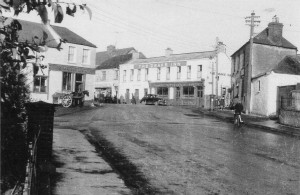
‘Hundreds of rioters advance on the two lone policemen in a darkened Finglas street, the only light coming from the windows of the pub.
‘The police retreat in the face of a barrage of stones and sticks hurled by the huge crowd; more stones are hurled at the pub shattering the plate glass windows. The two police take refuge around the corner of the pub but the crowd is still after them.’
Christopher Lee looks at a neglected episode of the 1913 Lockout.
http://www.theirishstory.com/2013/04/23/shot-down-like-a-dog-the-finglas-riot-of-1913/#.UXZFjaLvvTo
Padraig Yeates on April 23, 2013 | Filed Under Uncategorized | Comments Off on ‘Shot down like a dog’ – The Finglas Riot of 1913
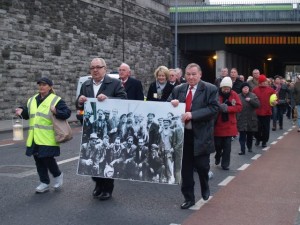
The Dublin Dockers’ Preservation Society organised a procession and mass to commemorate dockers and their contribution to building the port and city.
On Saturday evening (April 20th, 2013) current and former dockers turned up in great numbers, with their families, to march down Seville Place to the church of St Lawrence O’Toole’s on Sherriff Street. The mass included an evening of remembrance, with song and reflections. This was followed by a Dockers photographic exhibition in the local Sherriff Street Hall. There was great support from local councillors and TDs, including Emer Costello MEP, Maureen O’Sullivan TD, Councillor Anna Quigley and SIPTU President Jack O’Connor.
Padraig Yeates on April 21, 2013 | Filed Under Uncategorized | Comments Off on Dockers’ procession and mass in Dublin

John Lovett Memorial Lecture, University of Limerick 2013 by Padraig Yeates
1913 hasn’t gone away. Of all the centenaries we will be celebrating in the coming decade this is the one where re-enactment could supersede commemoration because the issues of collective bargaining, union recognition, workplace representation and industrial democracy are even more contested today than a hundred years ago.
The Lockout occurred because of a collision between an emerging native capitalist class personified in William Martin Murphy, President of the Dublin Chamber of Commerce and the response from organised labour personified by Jim Larkin, General Secretary of the Irish Transport and General Workers Union (ITGWU). Murphy was driven not just by the desire to make money and have untrammelled control of his enterprises, but by strongly held views on Irish nationality that were narrow and exclusive. Among those excluded from this vision were, of course, Larkin and his followers. (more…)
Padraig Yeates on April 13, 2013 | Filed Under Uncategorized | Comments Off on “Class War versus Social Compact? A Contemporary Analysis of the 1913 Lockout”
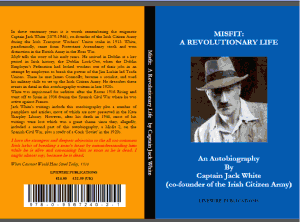
By Phil Meyler
In this centenary year it is worth remembering the enigmatic Captain Jack White (1879-1946), co-founder of the Irish Citizen Army during the Irish Transport Workers’ Union strike in 1913 (more…)
Padraig Yeates on April 12, 2013 | Filed Under Uncategorized | Comments Off on New Centenary Edition of MISFIT by Captain Jack White (Co-Founder of the Irish Citizen Army)
There is a great piece in today’s Irish Times (Saturday, April 6th) on the 1913 Tapestry by Patrick Freyne with a nice picture of Elizabeth Brennan, Cathy Henderson and Mary Hunter. To celebrate we are also reproducing below the first fully completed panel from the Tapestry by the Blanchardstown ICA Library Group. (I know the Baton Charge is now finished as well but it has had a couple of outings during production process so we will put that up shortly to keep your appetites whetted).
The images below show the original drawing by Cathy Henderson, a photograph of strikers waiting on the quay for the first foodship, the ss Hare and the panel
Padraig Yeates on April 6, 2013 | Filed Under Uncategorized | Comments Off on Dublin’s 1913 Lockout as seen through the eye of a needle, but it’s not a tapestry
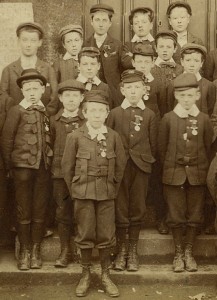
Willie Halpin is boy on the right at the front
In 1916 Willie Halpin and his family were living at number 6 Valentine Terrace , now incorporated into West Road. Willie ( aged 29) worked as a plater in the Dublin Dockyard, was a trade union activist and a member of the Irish Citizen Army. His wife Tilly (nee Matilda Henry) was also politically active, and was a member of Cumann na mBan .
To read more go to http://eastwallforall.ie/
Padraig Yeates on April 4, 2013 | Filed Under Uncategorized | Comments Off on From mascot to marksman – The story of William Halpin and the 1916 Rising
1913 Tram arriving outside Custom House on Tuesday, March 26th for One City One Book Launch of Strumpet City by James Plunkett Kelly, with a slogan for all seasons
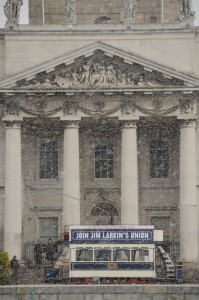
Padraig Yeates on March 28, 2013 | Filed Under Uncategorized | Comments Off on A Slogan for All Seasons – Wintry Launch for Strumpet City
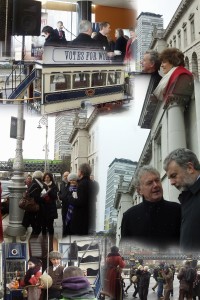
Irish Times report by Patsy McGarry, March 26th, 2013 – Picture collage by James L Kelly courtesy of Dublin City Libraries
Siptu president Jack O’Connor was struck yesterday by parallels between the Dublin of 2013 and that of 100 years ago. He had been at a photo shoot outside the Custom House, part of the relaunch of James Plunkett’s Strumpet City, which deals with the 1913 lockout in Dublin . It is the City Libraries Dublin: One City One Book for 2013.
“On e of the things that struck me, as we were taking photographs and so on, there was a homeless man asleep at the steps of the Custom House there in the freezing cold,” Mr O’Connor said at Liberty Hall yesterday. “It struck me that the more things change, the more they stay the same.”
The book provided “a graphic depiction of a major unfolding event in a flawed society . . . which paralleled major events in Western/developed capitalism, because the great battle which was fought out in these streets was symptomatic of something that was happening throughout what was then the UK,” Mr O’Connor said.
It was “ultimately a conflict between two sets of values, the values some people chose subsequently in revisionist Ireland to describe as the values of the slum, interdependence, collective solidarity versus the values of the quick buck”. Heroic resistance “That heroic resistance was ultimately channelled into the narrow culdesac of nationalism . . . which resulted in the defeat of the values of collective solidarity.”
It has meant “that we end up for t he third time in 60 years confronted by a major existential crisis which continues to challenge our very existence as a sovereign state.”
Mr O’Connor said we should “abandon the values system that has taken us to this sorry place once again and embrace instead the values of collective solidarity to inform the building of a new republic”.
Padraig Yeates on March 28, 2013 | Filed Under Uncategorized | Comments Off on TRAM(P) LAUNCH OF STRUMPET CITY ONE CITY ONE BOOK
Fred Bower’s Open Letter to British Soldiers – a Docker confronts Soldiers during Liverpool General Strike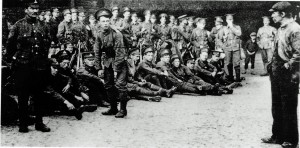 Ron Noone recalls a dramatic but largely forgotten episode from Larkin’s stormy career involving Larkin’s life long friend, Anarchist Stone Mason Fred Bower
Ron Noone recalls a dramatic but largely forgotten episode from Larkin’s stormy career involving Larkin’s life long friend, Anarchist Stone Mason Fred Bower
Fred’s “Open Letter to British soldiers” was sponsored by Jim Larkin. A month before the Liverpool General Transport Strike broke out in August 1911 Bower was visited by Larkin to be told “write me something for my paper”! The “request” by the editor of the recently formed Irish Worker could not be refused and “so I got my writing tackle and wrote an ‘Open Letter to British Soldiers’.” The Liverpool strikers distributed copies of the letter and a new newspaper, The Syndicalist printed it in its first issue. It caused considerable controversy and commotion and “in the prosecutions that followed on its publication, it was quoted in the courts, and printed verbatim in most of the papers of the day”! What was the outcome? Fred describes how “the editor of that paper (Guy Bowman), the printers (two brothers named Buck), Tom Mann (the Secretary), and a young zealot named Fred Crowsley (who got hold of one of the leaflets, and thought so much of it that, at his own expense, he had hundreds of it reprinted, which he himself distributed), all got gaoled, from one to six months. I had offered to give myself up, but Tom Mann would not hear of it. ‘It will only mean one more victim for them’, he said, ‘so why do it’”? (more…)
Padraig Yeates on March 13, 2013 | Filed Under Uncategorized | Comments Off on DON’T SHOOT BROTHERS! PICTURE CAPTION SUGGESTIONS WELCOME
Dublin City Council has launched its Decade of Commemorations Website and it is well worth a visit. Go to website below or click DCC link on left hand side of the page
http://www.dublincity.ie/RecreationandCulture/DecadeofCommemorations/DecadeofCommemorations/Pages/DecadeofCommemorations.aspx
Padraig Yeates on March 13, 2013 | Filed Under Uncategorized | Comments Off on Dublin City Council launches Decade of Commemorations Website





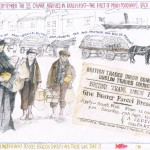
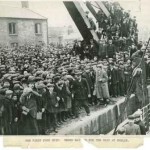
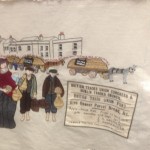



 Ron Noone recalls a dramatic but largely forgotten episode from Larkin’s stormy career involving Larkin’s life long friend, Anarchist Stone Mason Fred Bower
Ron Noone recalls a dramatic but largely forgotten episode from Larkin’s stormy career involving Larkin’s life long friend, Anarchist Stone Mason Fred Bower